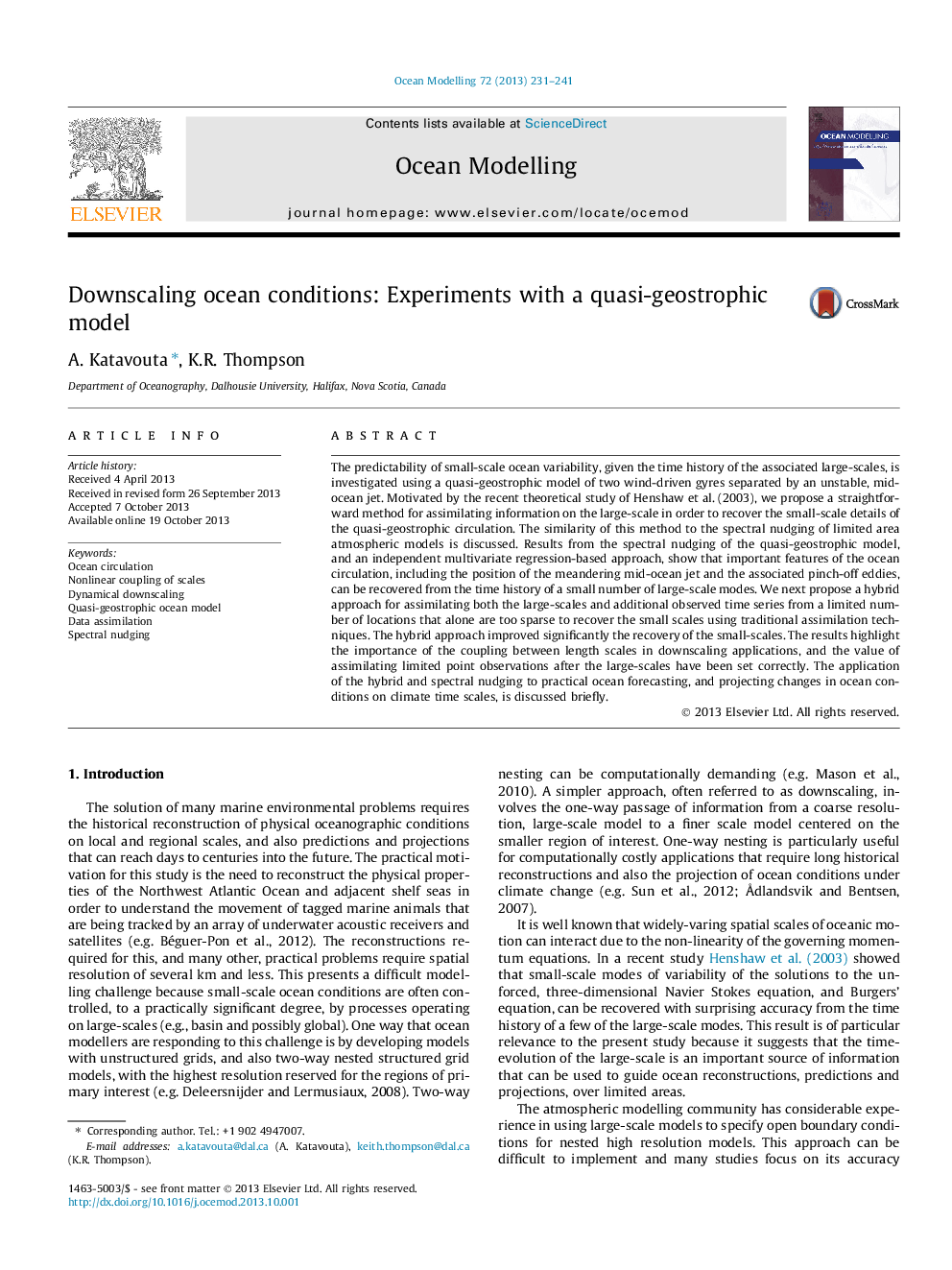| Article ID | Journal | Published Year | Pages | File Type |
|---|---|---|---|---|
| 6388246 | Ocean Modelling | 2013 | 11 Pages |
Abstract
The predictability of small-scale ocean variability, given the time history of the associated large-scales, is investigated using a quasi-geostrophic model of two wind-driven gyres separated by an unstable, mid-ocean jet. Motivated by the recent theoretical study of Henshaw et al. (2003), we propose a straightforward method for assimilating information on the large-scale in order to recover the small-scale details of the quasi-geostrophic circulation. The similarity of this method to the spectral nudging of limited area atmospheric models is discussed. Results from the spectral nudging of the quasi-geostrophic model, and an independent multivariate regression-based approach, show that important features of the ocean circulation, including the position of the meandering mid-ocean jet and the associated pinch-off eddies, can be recovered from the time history of a small number of large-scale modes. We next propose a hybrid approach for assimilating both the large-scales and additional observed time series from a limited number of locations that alone are too sparse to recover the small scales using traditional assimilation techniques. The hybrid approach improved significantly the recovery of the small-scales. The results highlight the importance of the coupling between length scales in downscaling applications, and the value of assimilating limited point observations after the large-scales have been set correctly. The application of the hybrid and spectral nudging to practical ocean forecasting, and projecting changes in ocean conditions on climate time scales, is discussed briefly.
Related Topics
Physical Sciences and Engineering
Earth and Planetary Sciences
Atmospheric Science
Authors
A. Katavouta, K.R. Thompson,
